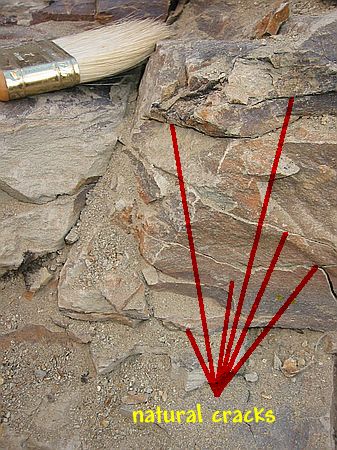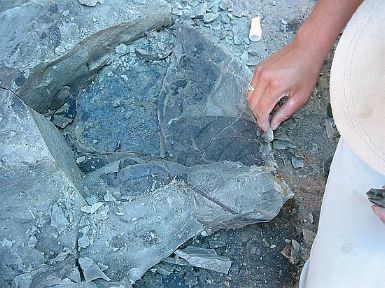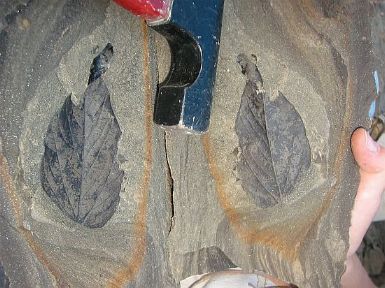 |
Excavating a fossil rainforest is very rewarding experience! As discussed in "The Making of a Fossil Rainforest", there’s layer upon layer of mudstone and sandstone containing thousands of fossils. Once the layers are discovered, it is easy to recover 500 or more fossil leaves in a single day. |
 |
As we split the layers of rock, it’s like opening a book and turning the pages of earth’s ancient past. The rock layers have naturally formed cracks or laminations which occur along the planes containing the fossil leaves. It’s fairly easy for even an amateur paleontologist to see the cracks. With a well-aimed swing of a rock hammer, the cracks easily open up to reveal their treasures. |
 |
Because the cracks form along the same plane as the leaves, they are almost always horizontal. This makes sense because the leaves of the rainforest fall and lie horizontally. We slowly work down through the layers of rock along these cracks. Each piece is removed and carefully lifted up. |
 |
Usually there is a main part of the fossil leaf on one side of the crack and a counterpart on the other side. Depending on the leaf specimen and preservation, the fossil part containing the most valuable scientific information may be the top side of the leaf or the underside. Or, it was very well preserved, as shown in the example at left; both sides will contain dramatic detail of veins, cuticle and stem. At the excavation site, a decision is made on which part to keep or if both parts will be kept for study.
|
